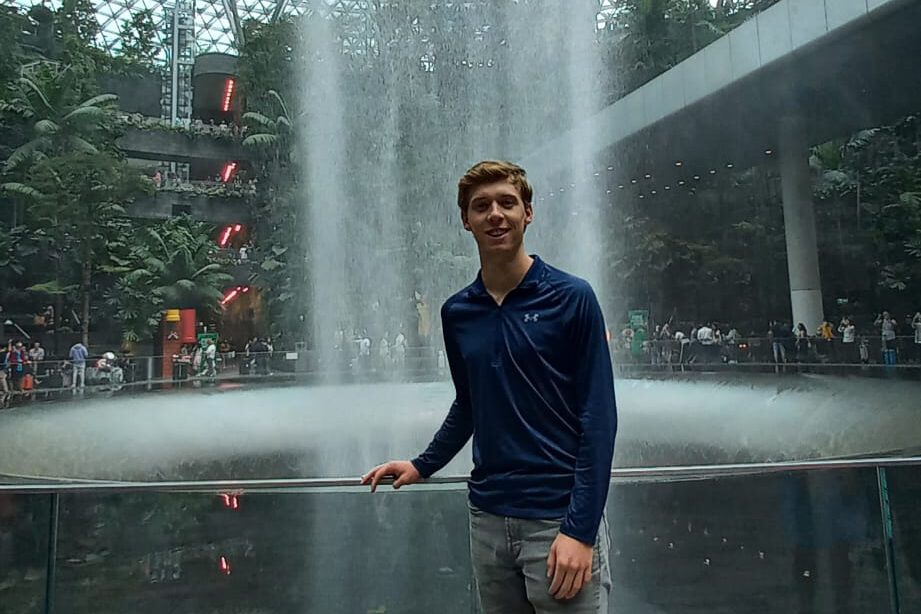
Professional Identity
From a young age I was taught to discover interests in a playful manner, stimulating my ability to explore one’s perspective with openness. This mentality still exists today, entering unknown fields of design with freedom for exploration. During the Bachelor’s study of Industrial Design, I learned to structure the approach of a design challenge, yet still using an exploratory style to enrich the scope of projects, and discover new perspectives. I developed an interest in combining multiple perspectives, where I look for opportunities to foster the strength of individuals and the collective. As an example, my first design project (“Sport-I”) presents an interactive vest for PE classes. The integrated sensor technology aims to visualize individual performance, improve honesty and offer user input. Design challenges offer freedom to mix and match, where I use a playful iterative approach, conceptualizing unconventional ideas to explore unique combinations.
Working solo allows for implementation of my exploratory style, which allows freedom for personal development and discovery of new fields of design. Nevertheless, the dynamics of working in a group broadens insights into the challenge due to the combination of perspectives. Noticeable is my role within a group, where I seek for playful actions exploring the scope’s potential. During the “DiVine” project, I explored design elements for rich interaction, using different haptics, materials and feedback loops. Alike the discoveries at a young age, I believe trial & error is crucial for the exploration of design. Trialing asks for the courage to test all variables of concept, discovering new potential for designs. Errors state the learning process and the adaptability of the design(er). Trial & error underlines that a design process is not linear, but offers freedom for exploring pathways towards a design. The “URE race car” visualizes that pathway best, with technical performances changing after each cycle of testing and adapting car components.
Throughout my bachelor’s I’ve applied the exploratory methodology in various stages of a design challenge. Firstly, trialing concepts with rapid prototyping physicalizes (often abstract) design details, discovering the facets of the design concept. Secondly, testing the usability and perception by potential users provides creative insights to adapt further iterations. Lastly, exploring the design’s potential shows the capabilities and context of a design, highlighting the essence of incorporation stakeholders (e.g., users, developers, regulators) who amplify the understanding of the design’s dimensions. These practices learned me various skills to be able to apply the methodology. For example, during the “Virtual Empathy” research project I learned to create a 3D virtual game with Unity (game-development platform), which was later in the project used to conduct a user test with.
Prominently present in my design challenges is the aforementioned ability to explore in a playful manner. Through designing tangible everyday products, my designs set the stage for an user experience facilitating exploration and discovery. I learned to combine interactive and material technology with societal perspectives, into everyday products. For instance the “Memory Lane” design project combines gaming interaction with family relationships into a design for the home. As a designer, I pave the way for discovering connectivity with others’ perspectives, while flourishing your own interests and abilities with playful and exploratory experiences.
Vision
Design facilitates the freedom for expression and playful discovery.
Our childhood offered the freedom to discover anything around us. I question why we stop approaching the unknown with openness and playfulness? The act of narrowing horizons often results in nescience, ignorance and disgust, freezing personal development and growing conflicts. Exploring the world around you fosters your own abilities and knowledge, moreover, it inspires others to broaden their horizons as well.
I believe that design has the role of facilitating the ability to explore our potential, discover another’s perspective and spark playfulness. Design with the an open attitude, creates freedom for expression and reflection. For example, modular products offer users to shape the design and outcome, such as Lego. Design sets the stage, creating opportunities to assist users for an open approach towards personal (or collective) goals.
The worlds around us, including ourselves, is constantly changing, I enjoy the role of rising technology intertwining with the dynamization, especially when this enables to connect people, thus connect perspectives. For instance, cooperative platforms servicing collaborative meetings. Someone’s perspective reflects their background, knowledge, values and dreams, connection broadens individual horizons with inspiration, exploration and discovery. In my belief, the connection should be offered more in the everyday life, creating openness for playful discovery in routines, to trigger exploring other perspectives. I value design(ers) enriching the connectivity experience of everyday products, offering users self-disclosure and exploration of others. That is the power of design: facilitating a connection between individual perspectives, to approach new horizons with freedom for expression and playful discovery.